Steam publishers landscape – Concentration and dominance of the US
Jun 13, 2022Which countries dominate the Steam publishing space?
Getting a game published is hard as is. Finding out that all the publishers you’d want to get are abroad makes it even worse.
In this article we’re exploring where most Steam publishers are geographically. We’ve tagged over 2,300 Steam publishers countries. They collectively make up over 95% of the revenue on the platform.
The US tops the country list both in terms of number of publishers and by revenue they generate. However, there are a few surprising countries that make it to the top 10.
Steam publishers are very concentrated to the US and Europe
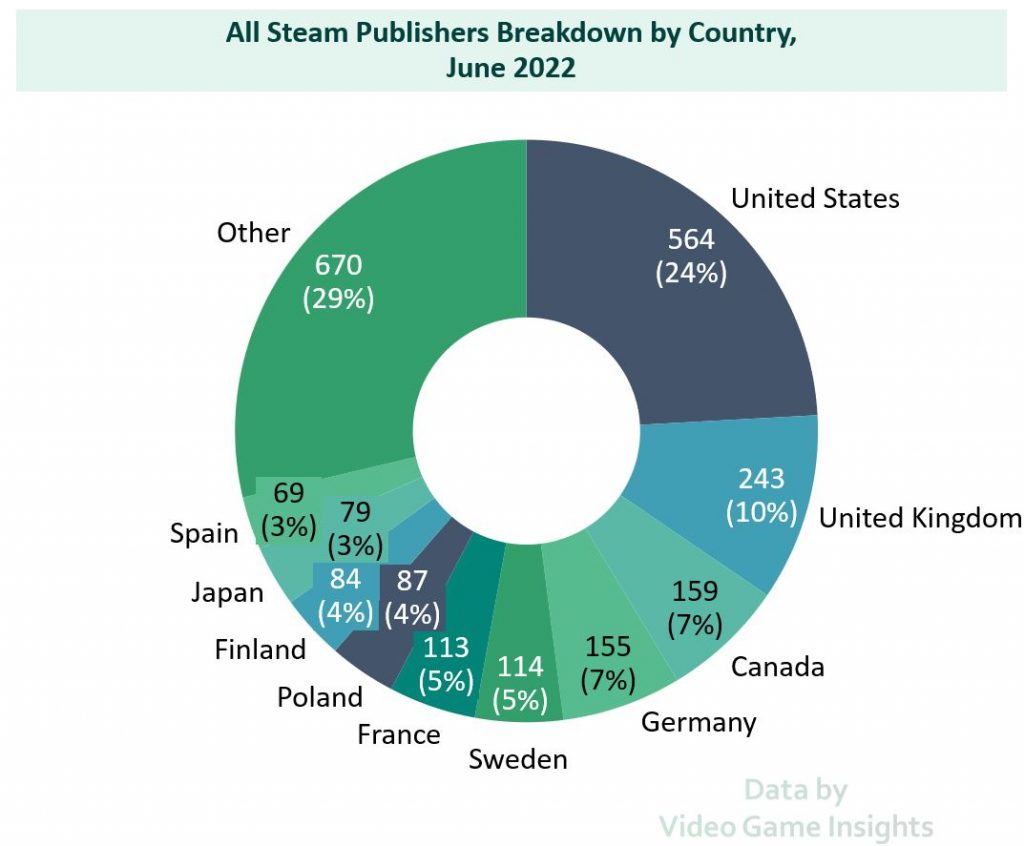
Almost a quarter of the 2,337 publishers come from the United States. In fact, the only country in the top 10 not being from the North America or Europe is Japan. 3% of the publishers are from there.
It’s worth noting the 3 countries that are punching above their weight in terms of publisher numbers – Canada, Sweden and Poland – all fairly small countries that have built incredibly strong gaming industry networks.
The top 10 countries look a bit different if we only look at the top 250 publishers in terms of revenue.
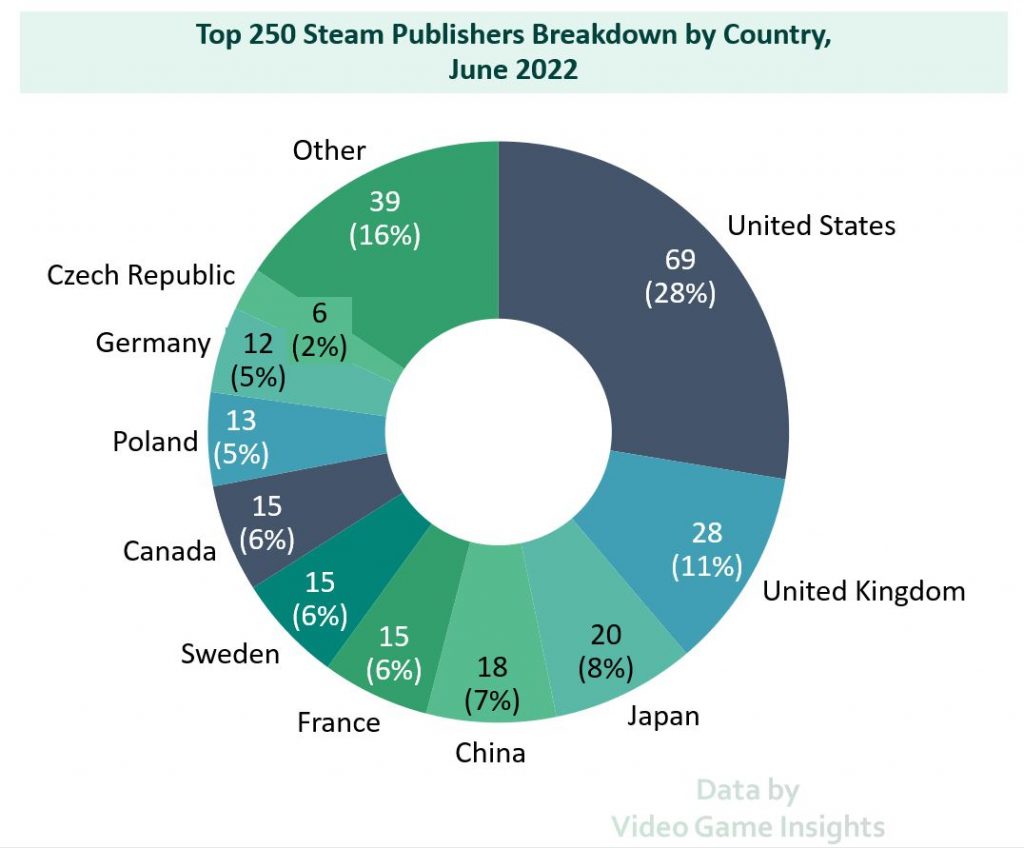
Overall, there are 33 countries represented in the Steam top 250 publisher list.
The US is still in the top with 69 out of the top 250 publishers from there. However, Japan has risen to 3rd place and China entered 4th with 20 and 18 of the top 250 publishers from these countries respectively.
The small indie publisher landscape might not be as strong and widely spread in these Asian leaders, but both have a range of formidable top publishers.
Large publishers account for almost all of the revenue on Steam
Astonishingly, the 250 largest publishers on Steam accounted for 91% of all revenue on Steam in the last 365 days.
We’ve highlighted this on a concentration curve below. The horizontal x axis shows the number of publishers and the vertical y axis shows what % of total revenue they account for on Steam.
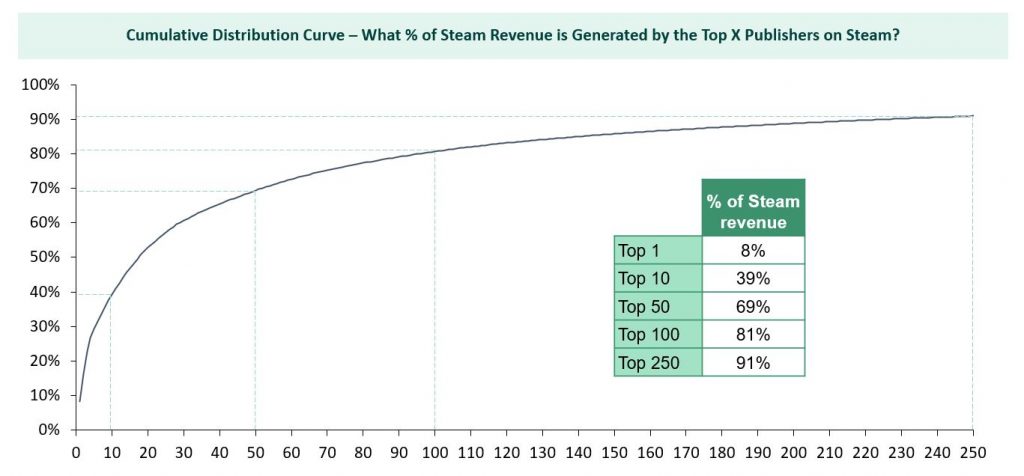
The biggest publisher, Bandai Namco, made over $800m on Steam in the last 365 days, mostly driven by the ELDEN RING sales. That’s 8% of all revenues on Steam. Top 10 publishers accounted for almost 40% of the revenues while top 250 made up nearly all of the revenue on Steam. 250th publisher only made $3.4m in the last 365 days. Anyone releasing a game that wasn’t published by the top 250 publishers made less than that.
Publisher revenues are very concentrated to a few key markets
In the chart below, we’ve split publishers’ last 365 day revenue and whole lifetime revenue (from Steam) by country.
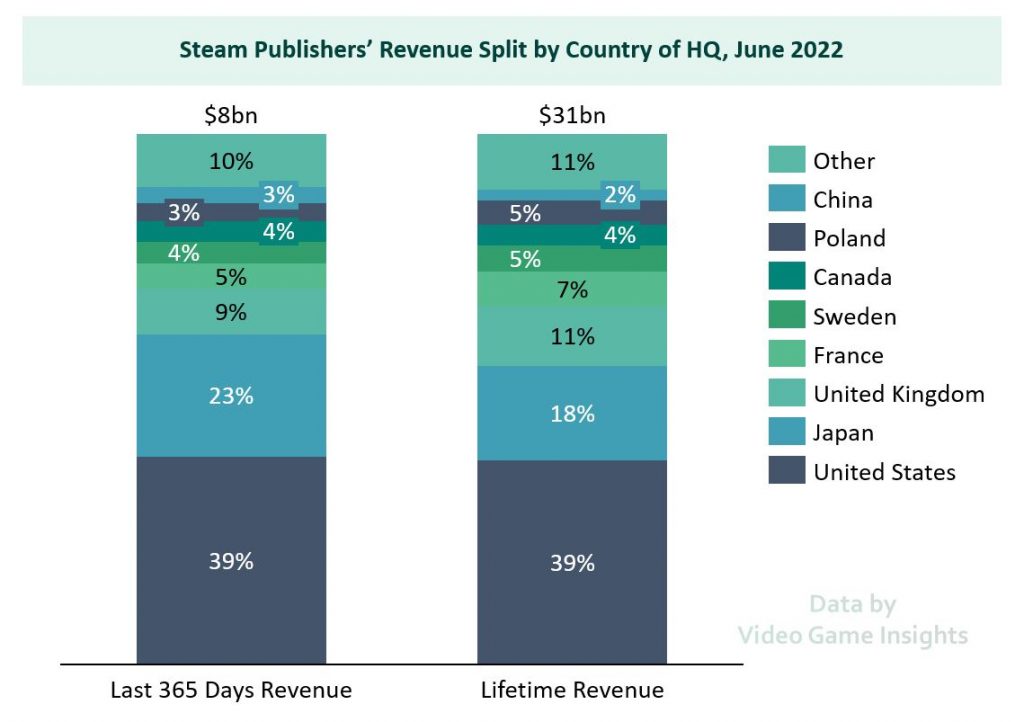
Firstly, the revenues for publishers are much more concentrated. 90% of the revenues come from the top 8 countries.
The US publishers make up a whopping 38% of all revenues on Steam. Japan comes in second and has been gaining share recently due to the release of ELDEN RING.
The US dominates the market in terms of units sold
In order to compare how much the US publishers dominate the Steam market, we’ve laid out the various metrics of comparison.
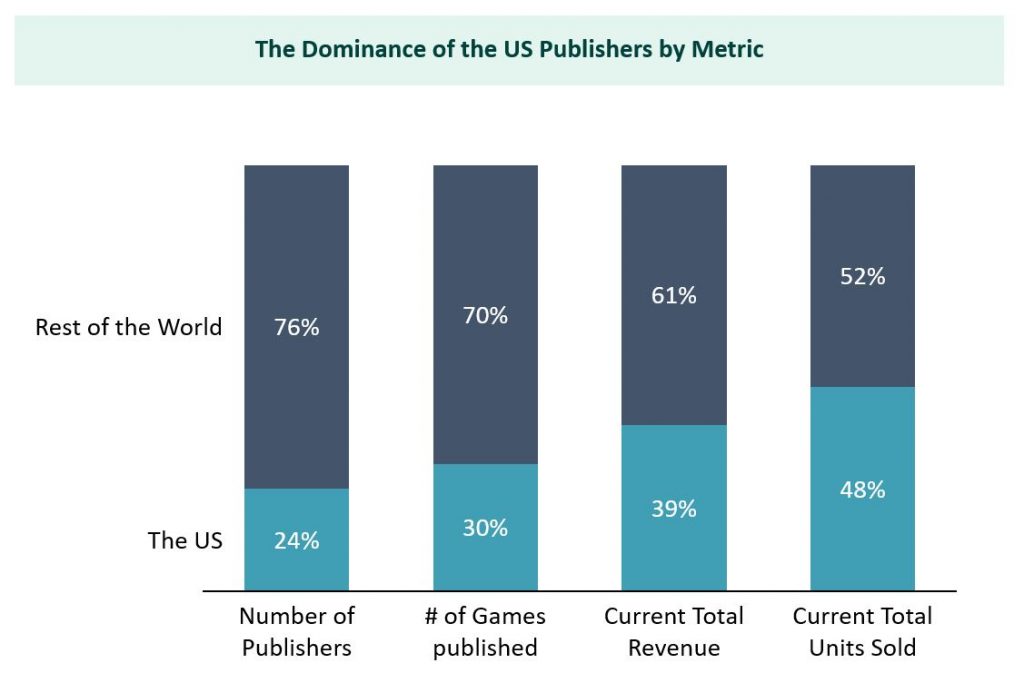
The US makes up 24% of the publishers on Steam, but 30% of the games published, indicating that the US publishers, on average, publish more games.
Similarly, the US makes up 39% of all revenue on Steam, indicating that the games published in the US, on average, make more money.
Finally, in terms of units sold, the US publishers account for a remarkable 48% of all units sold on Steam.
This is driven by the fact that large US publishers have aggressive discount strategies at the late lifecycle of games. Also, our “units sold” include free game downloads. The US overindexes in large free to play MMOs and other multiplayer games, bringing the units sold up significantly.
Steam games publishing is still dominated by the few western markets
Although there are thousands of Steam indie developers around the world, the publishing money is still concentrated in the US and Europe. This makes it harder for non-EU and US developers to find capital and publishing firepower.
In our next article, we’ll explore what the geographic distribution looks like for Steam developers. We’ll also explore if these developers tend to go with publishers from their regions or are the successful international developers finding their way to the top US and European publishers.